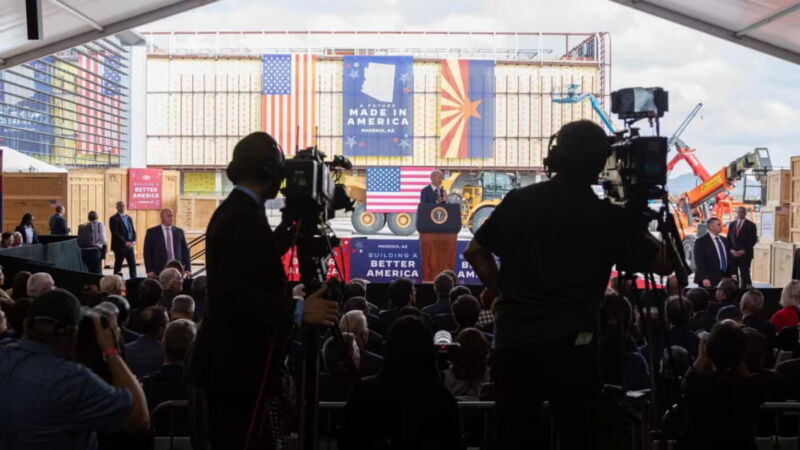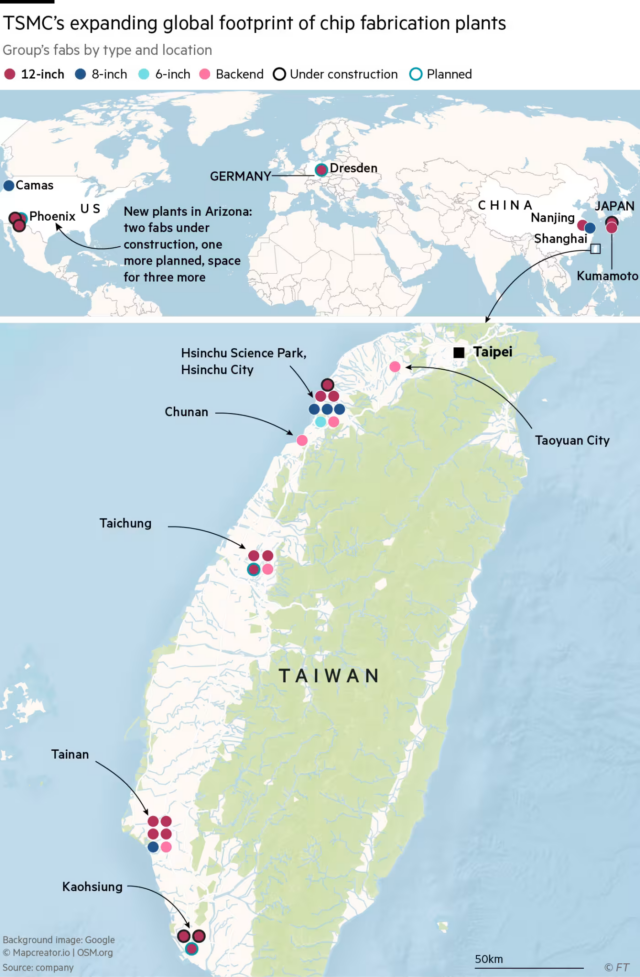
Enlarge / President Biden speaking at the official opening of TSMC’s first Arizona fabrication plant in December 2022. The Taiwanese chipmaker plans to start manufacturing 2-nanometer chips in the US in 2028.
Caitlin O’Hara/Bloomberg via Getty
Taiwan Semiconductor Manufacturing Company’s decision to bring its latest technology to America is a big step forward for US President Joe Biden’s quest for security in the vital tech supply chain—but still leaves Washington short of being able to completely produce the most complex chips in the US.
The world’s biggest chipmaker by sales must also pull off an intricate balancing act as it steps up its US presence, satisfying customers such as Nvidia without damaging its highly profitable business model, which has underpinned the development of the global semiconductor industry for more than 30 years.
TSMC’s planned $65 billion of investments in Arizona are part of a construction race in the US that involves other global chipmakers such as Samsung and Intel, which are also taking big subsidies from Washington.
But producing chips for purposes such as AI is still likely to involve plants in Asia, a reflection of the complexity involved in packaging various types of chip together to boost their performance and efficiency.
“It’s really not that simple to onshore everything. Having the logic [chip] foundry in the US and then a bit of the packaging there is not enough,” said Myron Xie, an analyst at boutique consultancy SemiAnalysis.
TSMC—which makes chips under contract at hugely complex and expensive fabrication plants, or fabs—plans to start manufacturing 2-nanometer chips in the US in 2028. This is an upgrade from the company’s previous plans. At that time 2 nm technology is expected to be the latest in mass production worldwide, whereas previously the company had intended each new US fab to start operating with process technology one generation behind Taiwan.
TSMC has also committed to offer a third plant using 2 nm or even newer technology by 2030.
Washington is paying a hefty price for the upgrade, with US$6.6 billion in grants and up to $5 billion in loans for TSMC. The money comes from the 2022 Chips and Science Act, which aims to onshore advanced chipmaking for the US. Commerce secretary Gina Raimondo has said the US will be on track to make about 20 percent of the world’s most advanced chips by the end of the decade.
But while Washington’s money offers some incentive, TSMC’s most important motive for stepping up its commitment to the US was to bring its own US strategy in line with the needs of Nvidia and other vendors of the AI chips that have become the most potent driver of global semiconductor demand.

FT
While TSMC will kick off 2 nm volume production in Taiwan next year, its original plans would have offered less powerful 3 nm chips only from 2028 in the US, putting it years behind the AI chip cycle, analysts said.